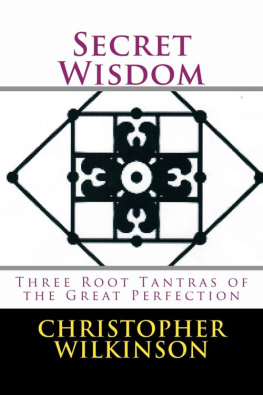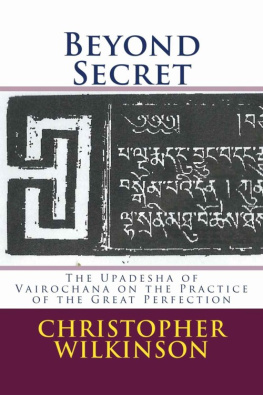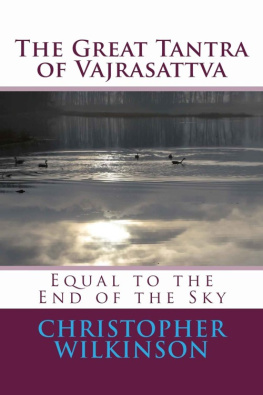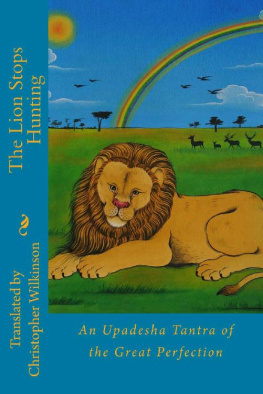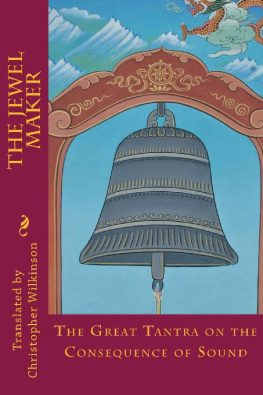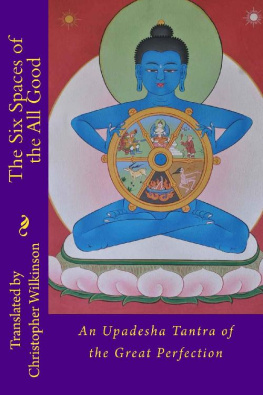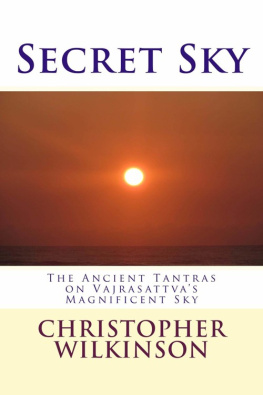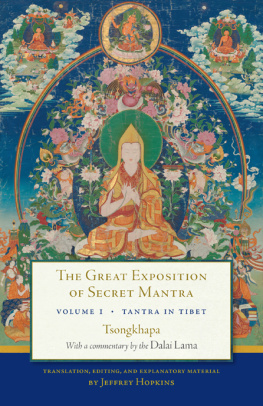Secret Wisdom Three Root Tantras of the Great Perfection Translations by Christopher Wilkinson September 2014 No part of this book may be reproduced in any form or by any electronic or mechanical means including information storage and retrieval systems, without permission in writing from the author. The only exception is by a reviewer, who may quote excerpts in a review. Published by Christopher Wilkinson Cambridge, MA, USA Copyright 201 Christopher Wilkinson All rights reserved. ISBN: 1501018698 ISBN-13: 978-1501018695 BISAC: Literary Collections / Asian / General
Preface The set of translations you now hold was completed in 1990. Some ten years before that my teacher, Dilgo Kyentse Rinpoche , had advised me to make a careful reading of the contents of the mTshams brag edition of the rNying ma rgyud bum, and to translate as much as possible into a standard of quality English literature. There was little done in the field of rDzogs chen literature at the time.
Khenpo Palden Sherab generously gave me much detailed advice on readings and presentation of this literature, in the hope that my translations would work toward a better understanding in the world. There have been great advances in the availability of source documents as well as shared understanding of their contents since the time of these translations. Many students are now familiar with the basic presentation of rDzogs chen. My own understanding of the content, as well as effective translation of it, has matured with the years as well. I present these translations as they are, for I have received many letters asking that I publish them. Generally speaking, the translation of rDzogs chen literature is still very much in a formative condition.
I hope that this work will be of use to those who are serious about this study, and encourage those who are seriously interested to seek out qualified experts in this literature. I also hope that those who find this material especially interesting will be encouraged to delve into the repository from which they came, the rNying ma rgyud bum, for there is a trove of ancient and amazing literature there that has barely been examined. Thank you, Chris Wilkinson Cambridge, Massachusetts 2014
INTRODUCTION As the title indicates, this book contains translations of three Tan tras on the Great Perfection ( rDzogs chen ) . A Tantra is a sacred, and often esoteric, work of literature . The Great Perfection is held by its followers to be the highest pathway in the Buddhist tradition. The Buddhist tradition was historically founded by the teacher kyamu i , also known as Gautama Buddha, in about the fifth century B.C.E., yet the Buddhist tradition itself holds that Buddhas continually appear throughout all time, and that kyamu i is simply the Buddha of the present era.
There are a large number of texts claiming to record the teachings of the Buddha kyamu i . There are also many texts recording the teachings of other Buddhas . Many of these teachings are contradictory . Buddhists themselves have always been aware of the large variety of Buddhist literature . It has been considered necessary for each sect to determine which texts it holds to be authoritative and which not . Some Buddhist sects, such as the Theravadins, have chosen to declare large numbers of "Buddhist" works to be forgeries, thus maintaining orthodoxy by exclusion .
Other Buddhist traditions, particularly those of the Great Vehicle or Maha yna , have accepted a much larger corpus of Buddhist literature. In so accepting many contradictory works to be authoritative it was necessary to categorize the literature into different classes in order to distinguish the level of teaching contained in the work in question . Thus there is the general division between Great Vehicle Buddhism and Small Vehicle Buddhism, though only the "Great Vehicle" recognizes these terms . Some go on to divide the Great Vehicle into the Sutra Vehicle, or vehicle of the Buddha's discourses, and the Tantra Vehicle, or vehicle of the esoteric instructions . What is called the Small Vehicle is repr esented in the modern world by the followers of the Theravada tradition living in the countries of Thailand, Sri Lanka, Burma, and Laos . What is called the Great Vehicle is represented by the traditions of China, Japan, Korea, Mongolia, Nepal, Bhutan, Bali, and Tibet .
In all Great Vehicle countries both Sutra and Tantra traditions can be found side by side. Both Sutras and Tantras appear to represent many different levels of teaching, and each school of Buddhism has its own system for classifying the literature . The texts translated in this volume were preserved only in the Tibetan language, however, so I wish to direct your attention to the development of Buddhism in that country. As Buddhism came from India, China, and Central Asia to Tibet two major systems of classifying the levels of the Buddhist teaching became popular . The earliest texts translated into Tibetan speak of a nine level categorization, while later translations use a system that speaks of four levels of Tantra. According to the earlier system there are the three outer levels of Auditor, Private Buddha, and the Bodhisattva; the three inner levels of the Kriyayoga, the Upayoga, and the Yoga itself; and the three secret levels of the Mahyoga , the Anuyoga, and the Atiyoga, which is also known as the Great Perfection .

